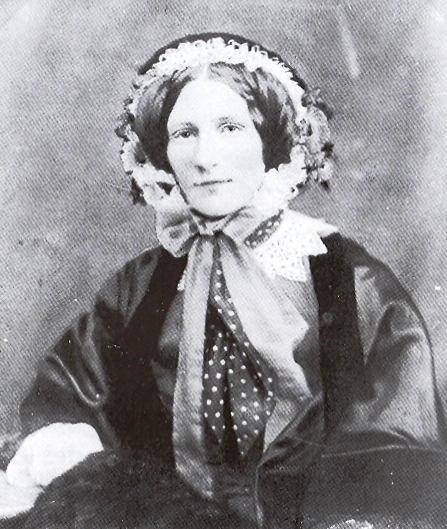by Scott Mehl © Unofficial Royalty 2018
Duchy of Saxe-Altenburg: The Duchy of Saxe-Altenburg was created in 1826 when Friedrich, Duke of Saxe-Hildburghausen became Duke of Saxe-Altenburg. After Friedrich IV, Duke of Saxe-Gotha-Altenburg died in 1825 without heirs, the Ernestine duchies were reorganized. Gotha passed to the Duke of Saxe-Coburg-Saalfeld becoming the Duchy of Saxe-Coburg and Gotha and Altenburg passed to Friedrich. In exchange, the two Dukes ceded Saalfeld and Hildburghausen, respectively, to the Duke of Saxe-Meiningen.
As World War I ended, the last Duke of Saxe-Altenburg, Ernst II, was one of the first German sovereigns to realize that major changes were coming and quickly arrived at an amicable settlement with his subjects. He abdicated on November 13, 1918. Today the territory that encompassed the Duchy of Saxe-Altenburg is located in the German state of Thuringia.
********************

Georg, Duke of Saxe-Altenburg; Credit – Wikipedia
Georg, Duke of Saxe-Altenburg reigned from 1848 until 1853. He was born Prince Georg Karl Friedrich of Saxe-Hildburghausen in Hildburghausen, Duchy of Saxe-Hildburghausen, now in Thuringia, Germany, on July 24, 1796, to Friedrich, Duke of Saxe-Hildburghausen (later Duke of Saxe-Altenburg) and Duchess Charlotte Georgine of Mecklenburg-Strelitz. Georg had 11 siblings:
- Prince Joseph (born and died 1786) – died in infancy
- Princess Katharina Charlotte (1787-1847) – married Prince Paul of Württemberg, had issue
- Princess Caroline (born and died 1788) – died at birth
- Joseph, Duke of Saxe-Altenburg (1789-1868) – married Princess Amalie of Württemberg, had issue
- Princess Friederike (born and died 1791) – died in infancy
- Princess Therese (1792-1854) – married King Ludwig I of Bavaria, had issue
- Princess Luise (1794-1825) – married Wilhelm, Duke of Nassau, had issue
- Prince Franz Friedrich (1795-1800) – died in childhood
- Prince Friedrich Wilhelm (1801-1870) – unmarried
- Prince Maximilian Karl (born and died 1803) – died in infancy
- Prince Eduard Karl (1804-1852) – married (1) Princess Amalie of Hohenzollern-Sigmaringen, had issue; (2) Princess Luise Caroline Reuss of Greiz, had issue
As a younger son, it was not expected that Georg would one day succeed to the ducal throne. He began a military career early, serving in the Austrian forces in 1804. Ten years later, he was wounded in the Italian Campaign and forced to give up active service. Returning to Hildburghausen, he lived with his brother Joseph at the nearby Charlottenburg Palace. From 1816 until 1820, he studied at the University of Heidelberg and was appointed as a personal adjutant to King Maximilian I of Bavaria. After two years, he returned to Hildburghausen and undertook a project to redesign a castle in nearby Hellingen. He also founded a youth army, and in 1824, founded the municipal savings bank in Hildburghausen.

Marie Luise of Mecklenburg-Schwerin. source: Wikipedia
On October 7, 1825, in Ludwigslust, Grand Duchy of Mecklenburg-Schwerin now in Mecklenburg-Vorpommern, Germany, Georg married Duchess Marie Luise of Mecklenburg-Schwerin. She was the daughter of Friedrich Ludwig, Hereditary Grand Duke of Mecklenburg-Schwerin and Grand Duchess Elena Pavlovna of Russia. They had three sons:
- Ernst I, Duke of Saxe-Altenburg (1826-1908) – married Princess Agnes of Anhalt-Dessau, had issue
- Prince Albrecht (1827-1835) – died in childhood
- Prince Moritz (1829-1907) – married Princess Auguste of Saxe-Meiningen, had issue
The following year, his father became the Duke of Saxe-Altenburg and moved to Altenburg. Georg and his family, however, remained in Hildburghausen for three more years. Eventually, in 1829, they moved to his father’s new duchy, taking up residence at Christiansburg Castle in nearby Eisenberg.

Christiansburg Castle. photo: by Wolkenkratzer – Own Work, CC-BY-SA 4.0, https://commons.wikimedia.org/w/index.php?curid=38730308
Georg became Duke of Saxe-Altenburg on November 30, 1848, succeeding his brother Joseph who was forced to abdicate. As Duke, he reformed the financial administration of the duchy and founded the George Foundation, which worked to promote and support artists and craftsmen. Georg came significant amounts of his own money to welfare efforts for the poor, earning him the nickname ‘Georg the Good’.
In declining health, Georg handed over much of his role to his son Ernst on May 28, 1853. Just over two months later, Duke Georg died at Jagdschloss Hummelshaim (link in German), now in the German state of Thuringia, on August 3, 1853. He was buried in the Ducal Mausoleum in Altenburg Cemetery in Altenburg, Duchy of Saxe-Altenburg, now in the German state of Thuringia, until 1974. At that time, all the remains in the mausoleum were removed and buried in an unmarked grave elsewhere in the cemetery.
This article is the intellectual property of Unofficial Royalty and is NOT TO BE COPIED, EDITED, OR POSTED IN ANY FORM ON ANOTHER WEBSITE under any circumstances. It is permissible to use a link that directs to Unofficial Royalty.
Saxe-Altenburg Resources at Unofficial Royalty
